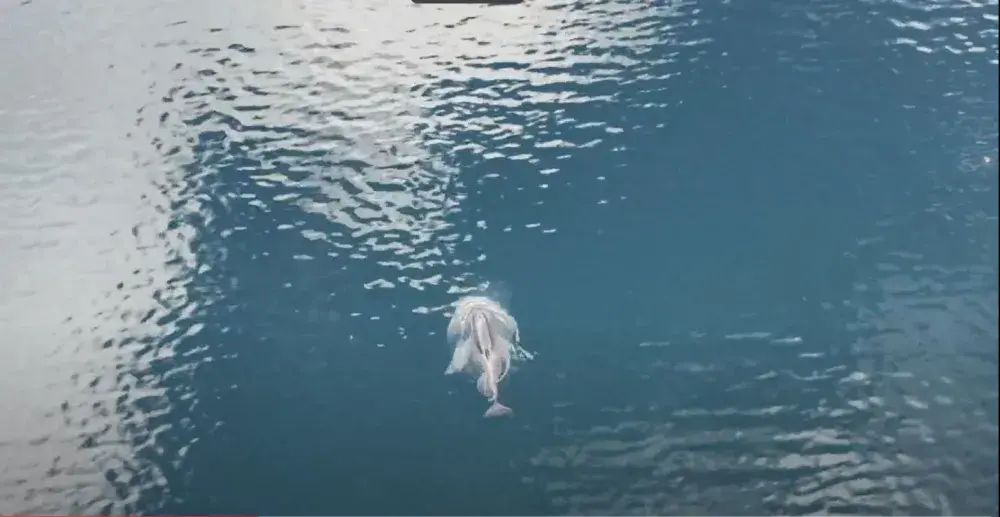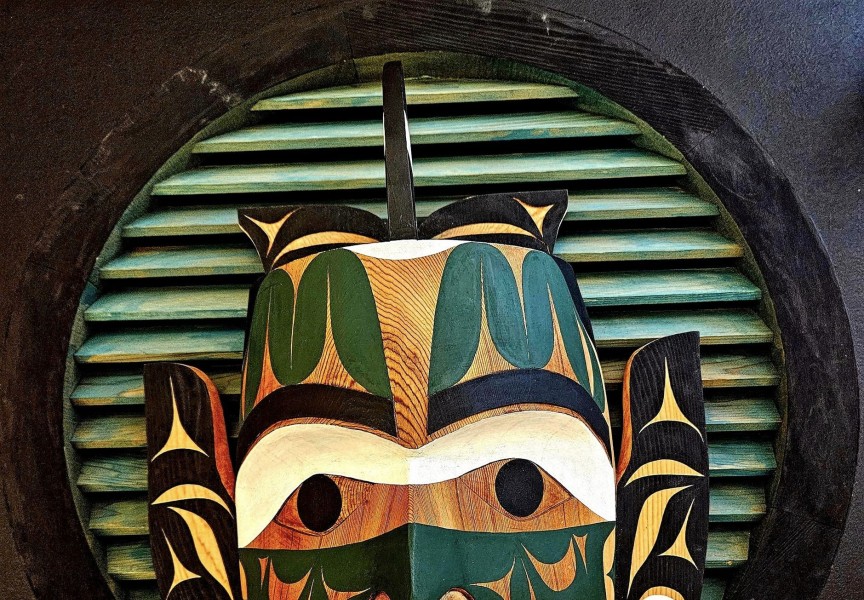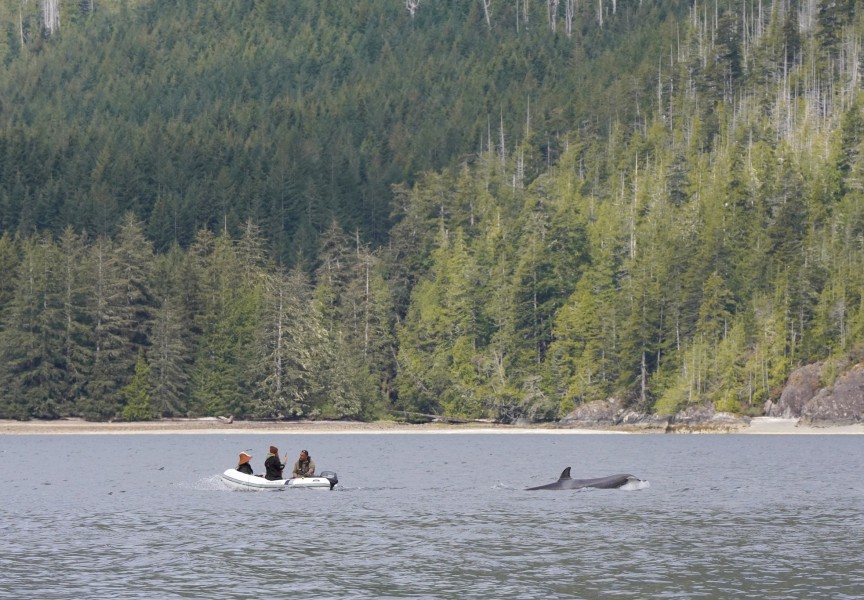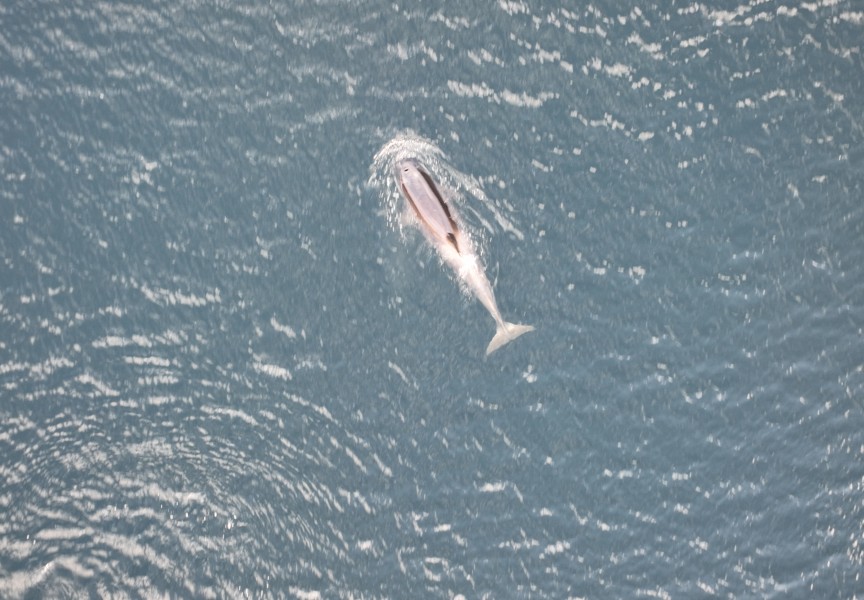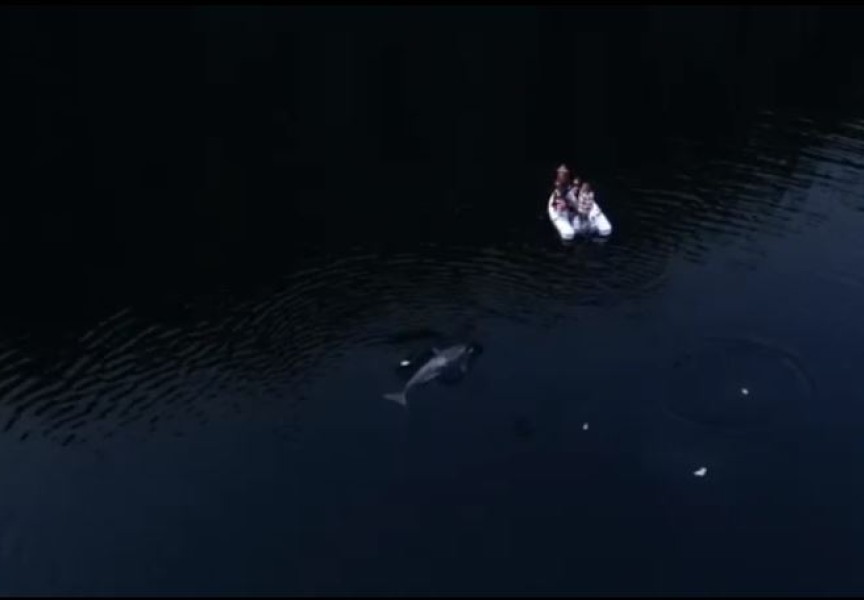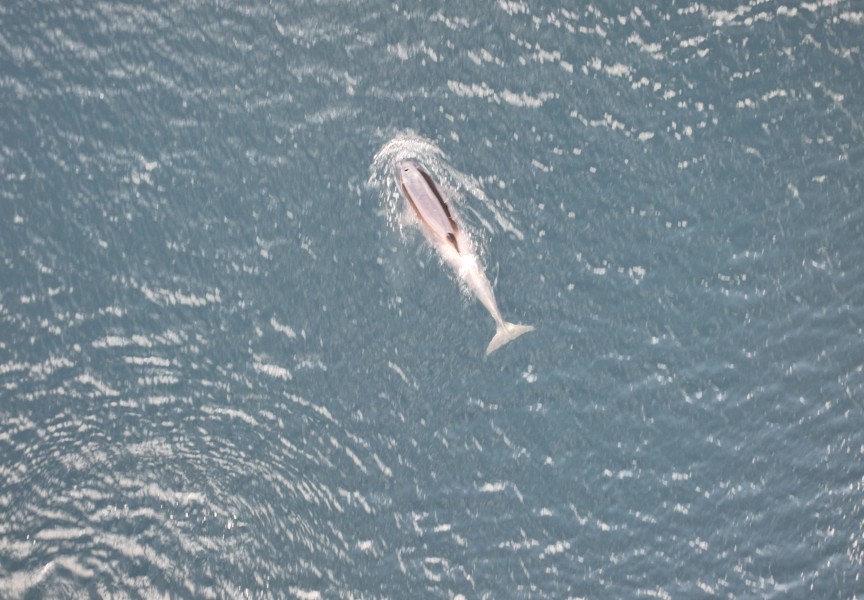Getting a trapped young orca out of the shallow waters of Little Espinosa Inlet is being described as “threading the needle” from those at the scene.
Ehattesaht Chief Councillor Simon John used the term during a press event on March 27, four days after the calf and its mother ventured into the lagoon down the road from the First Nation’s community of Ehatis. The beached mother died later that morning, while the calf was able to survive by swimming in water next to the Fair Harbour road’s causeway. The Ehattesaht have since named the young whale kʷiisaḥiʔis, which means ‘Brave Little Hunter’.
On Tuesday, March 26 Ehattesaht closed the road and inlet passage to traffic as the First Nation worked with Nuchatlaht members and staff from Fisheries and Oceans Canada to get the young orca out of the lagoon. From a vessel down the inlet, the crew played recordings of a nearby pod in hopes of luring the orca to deeper waters, but this was unsuccessful.
“We tried pretty hard yesterday to get it out of there,” said John. “It almost worked but didn’t actually meet what we were trying to do.”
He noted that two related pods have been sighted further north on the coast, by Yuquot in Nootka Sound and at Kyuquot. John hopes that these groups can help to get the young whale out of the lagoon.
“They’re pretty close and we’re hoping the vocals of the young one can, if they do come into the area, lure them in,” he said. “My real concern is that the whale gets out of the lagoon safety and reaches its pod.”
Ehattesaht chief and council’s media notes from the press briefing mentioned that after resting on Tuesday, the First Nation planned to try to guide kʷiisaḥiʔis with their canoes.
“We are hoping to connect with her and see if she will follow the drum,” stated chief and council. “It has worked in the past.”
Paul Cottrell, a marine mammal coordinator with DFO, was also present at the media briefing. He’s been with the Ehattesaht in their community next to Zeballos since the evening after the orcas got stranded, exploring other means of coaxing the young one out of the lagoon.
Another technique is urging the orca forward during a high tide with loose underwater ropes.
“It’s a way of using a physical barrier potentially to help move the whale,” said Cottrell, who did not rule out airlifting the animal if other approaches don’t work. “We are thinking beyond if we have to change tactics, depending on the calf’s health going forward.”
A necropsy performed on the dead mother - who was pregnant with a female – indicated that the surviving calf was breast feeding. At a year and nine months old, Cottrell said it’s unlikely such a young transient orca could hunt on its own. kʷiisaḥiʔis has not been fed in the four days it has been stranded in the lagoon.
John noted that feeding the young orca might disable it from surviving in the wild in the future.
“The reality is that helping the whale eat…the relationship might not be able to be broken,” he said. “If It does eat from humans, it might get stuck with that.”
Based on other incidents of stranded killer whales, Cottrell said the calf may be able to survive for weeks without eating.
“It’s not known exactly, but it’s estimated at a couple of weeks, potentially,” he said. “This is a two-year-old and the other experiences were with a three-year-old.”
“The calf is active, the body condition looks okay,” he added.
John estimated that the transient killer whales came in during the early morning hours of Saturday, March 23 during high tide. But by 7 a.m. the mother was beached when the waters had receded. She had a seal carcass in her mouth, according to those on the scene.
“When the tide came in, the whale actually started to suffocate,” said John. “It didn’t have the strength to stay upright and make itself upright at that point.”
After consulting with Ehattesaht elders, a member of the First Nation performed a ceremony for the deceased mother the morning after she passed.
“We tried to release the whale’s spirit with a ceremony,” said John.
“It’s a very difficult situation, emotional for everyone involved,” added Cottrell, who is determined to continue to work with the local First Nations to find a solution for the stranded young orca. “This is a very difficult situation with a high likelihood of not being successful, but that’s not going to stop us.”

